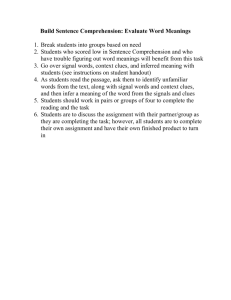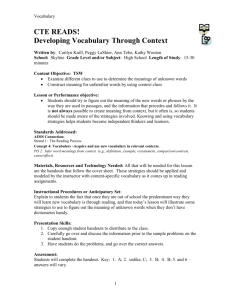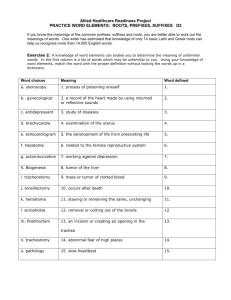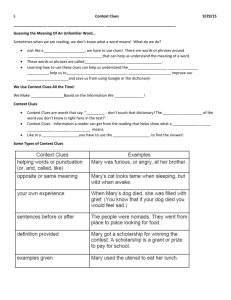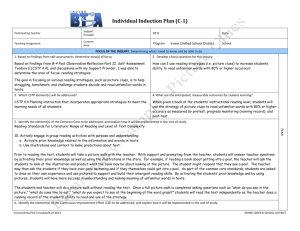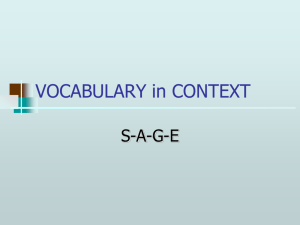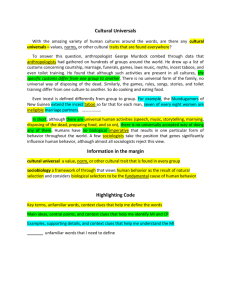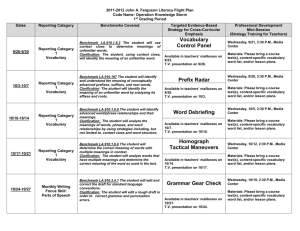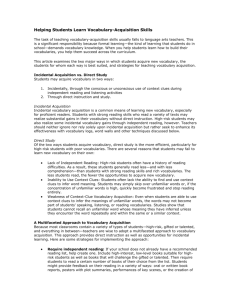What BCPS Parents Need To Know About…
advertisement
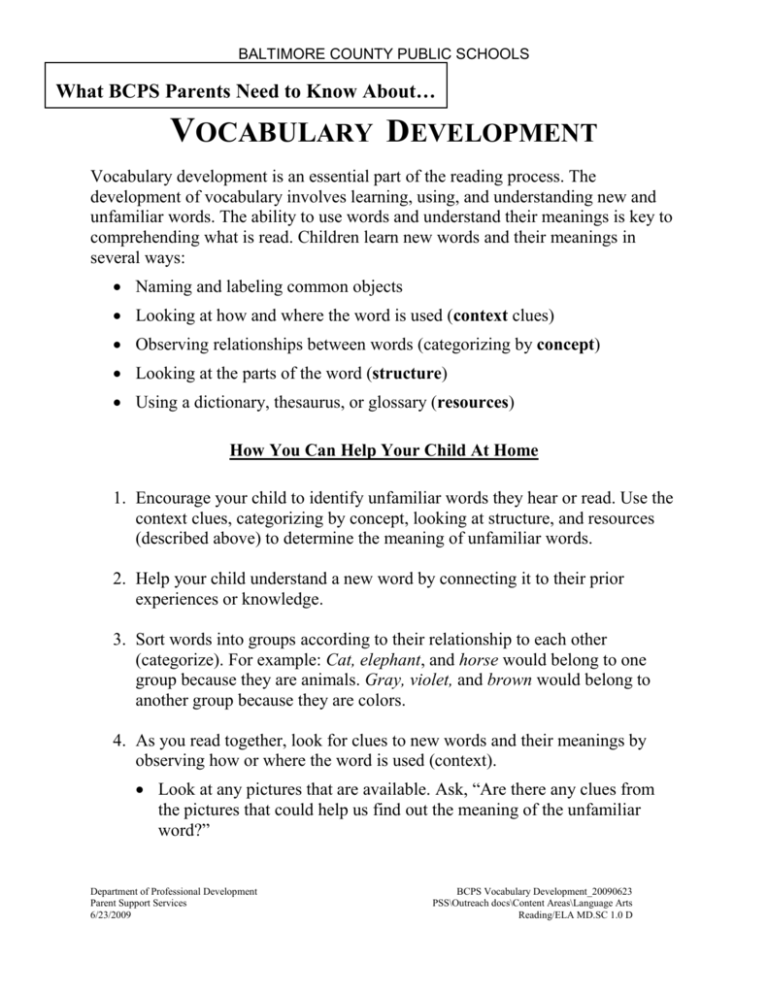
BALTIMORE COUNTY PUBLIC SCHOOLS What BCPS Parents Need to Know About… VOCABULARY DEVELOPMENT Vocabulary development is an essential part of the reading process. The development of vocabulary involves learning, using, and understanding new and unfamiliar words. The ability to use words and understand their meanings is key to comprehending what is read. Children learn new words and their meanings in several ways: Naming and labeling common objects Looking at how and where the word is used (context clues) Observing relationships between words (categorizing by concept) Looking at the parts of the word (structure) Using a dictionary, thesaurus, or glossary (resources) How You Can Help Your Child At Home 1. Encourage your child to identify unfamiliar words they hear or read. Use the context clues, categorizing by concept, looking at structure, and resources (described above) to determine the meaning of unfamiliar words. 2. Help your child understand a new word by connecting it to their prior experiences or knowledge. 3. Sort words into groups according to their relationship to each other (categorize). For example: Cat, elephant, and horse would belong to one group because they are animals. Gray, violet, and brown would belong to another group because they are colors. 4. As you read together, look for clues to new words and their meanings by observing how or where the word is used (context). Look at any pictures that are available. Ask, “Are there any clues from the pictures that could help us find out the meaning of the unfamiliar word?” Department of Professional Development Parent Support Services 6/23/2009 BCPS Vocabulary Development_20090623 PSS\Outreach docs\Content Areas\Language Arts Reading/ELA MD.SC 1.0 D BALTIMORE COUNTY PUBLIC SCHOOLS Read the words before and after the unfamiliar word. Look for words that give clues. Ask, “What could the unfamiliar word mean?” Read the sentences before and after the unfamiliar word. Ask, “What information could help us figure out the meaning of the unfamiliar word? 5. Help your child examine the parts of words (structure) in order to group them with similar words and gain meaning. Are the words contractions? (can not = can’t) Is the word a compound word? (dog + house = doghouse) Is there a prefix? (anti = against, antibacterial) Is there a suffix? (est = most, tallest) 6. Have your child keep a list of new words in a notebook. Review the words and their meanings, and watch the list grow. 7. Use text features to help your child determine the meaning of new words. These features are informational aids used in a text to bring meaning to the concepts or ideas presented. Text features include: Photographs and illustrations Captions and headings Charts and diagrams Bold, highlighted, and italicized text 8. Provide resources your child can use to find the meanings of new words: Dictionary Thesaurus Textbook glossaries 9. Encourage your child to use newly learned words when speaking and writing. Make a point of using these new words when you speak with your child. Department of Professional Development Parent Support Services 6/23/2009 BCPS Vocabulary Development_20090623 PSS\Outreach docs\Content Areas\Language Arts Reading/ELA MD.SC 1.0 D
